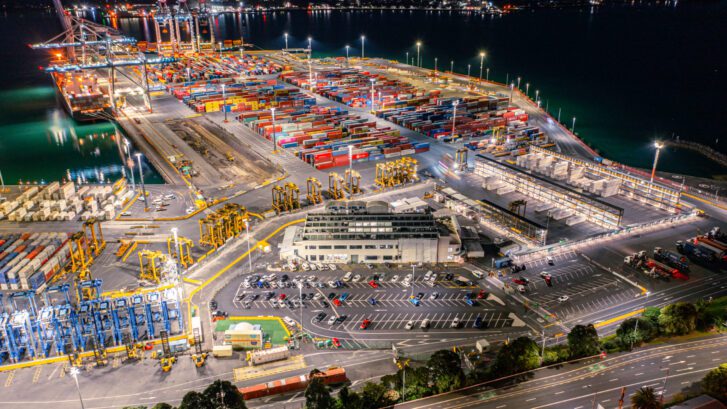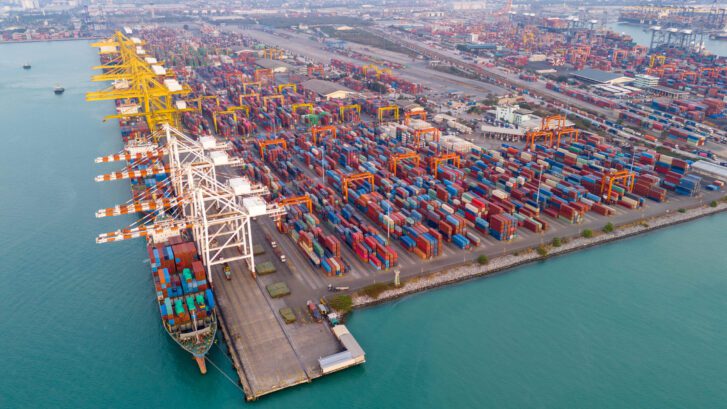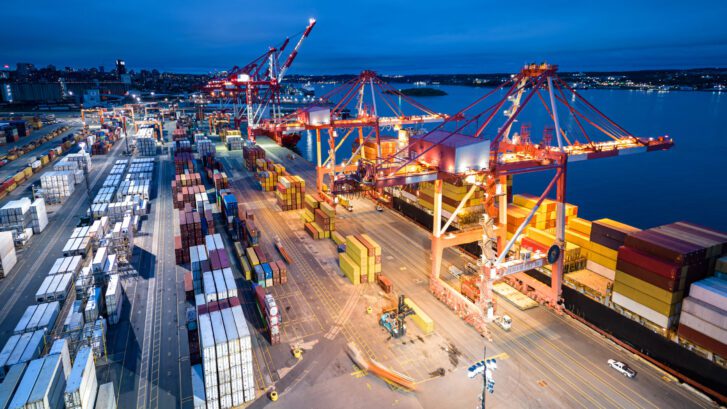Port Equipment Maintenance Decision: Repair or Replace?
Port Equipment Dilemma: Maintenance vs New Machinery – What’s the Right Move?
Introduction
Ports are the backbone of global trade, handling more than 80% of all goods moved across countries by volume. As pressure grows for ports to work faster and more reliably, operators often face a tough decision: Is it better to keep fixing old equipment or invest in brand-new machines?
This isn’t just a budgeting question. It impacts safety, productivity, downtime, and even the environment. In this article, we’ll look at the pros and cons of maintaining existing equipment versus buying new. We’ll explore costs, technology, environmental impact, and what’s best for long-term success.
1. Why Equipment Matters in Ports
Modern ports depend on heavy-duty machines like ship-to-shore cranes, rubber-tyred gantry cranes, reach stackers, and conveyor belts. These tools move containers, bulk cargo, and materials quickly and safely.
But port gear works in tough conditions—salt air, heavy loads, and long operating hours. That causes wear and tear. Good maintenance can extend the life of machines, but over time, all machines wear out. When is it smarter to replace them?
2. Why Maintenance Still Makes Sense
a) Lower Short-Term Costs
Fixing machines is usually cheaper than buying new ones. Regular upkeep—like oiling parts, replacing worn pieces, or updating software—can keep machines running well for years. This delays large spending on new machines.
b) Quicker Turnaround
Repairs are often faster than ordering and installing new machines, which can take months. This is important in busy ports where every hour counts.
c) No Extra Training Needed
Operators and tech staff already know how to use current machines. Sticking with existing equipment avoids extra training, setup time, and software adjustments.
d) Better for the Environment
Keeping what you have helps reduce waste and avoids the energy used in making and shipping new machines. Maintenance supports a more eco-friendly way of working.
3. When Maintenance Isn’t Enough
a) Repair Costs Add Up
As machines age, they need more frequent and costly repairs. Spare parts may be hard to find, and repair jobs take longer. At a certain point, fixing old machines costs more than replacing them.
b) Surprise Breakdowns
Older machines can fail with little warning—even if they’ve been serviced. These breakdowns can delay cargo handling and upset schedules, costing ports time and money.
c) Outdated Technology
Old machines may not support newer tech like automation or remote controls. Retrofitting may not be worth it or might fall short of performance expectations.
4. Why New Equipment Can Be a Game-Changer
a) More Power and Speed
New machines often work faster, carry more, and help ports handle bigger ships. Upgrading can raise a port’s capacity and boost productivity.
b) Save Energy and Cut Emissions
Modern equipment uses less fuel or runs on electricity. This helps ports cut costs, lower emissions, and meet green goals or government rules.
c) Safer to Operate
New machines come with built-in safety features like collision sensors, auto-brakes, and warning systems. This helps prevent accidents and injuries.
d) Fits with Smart Port Systems
New tools often have sensors and internet connections. They collect real-time data and help operators make better decisions, reduce downtime, and manage maintenance more effectively.
5. Why New Equipment Isn’t Always the Answer
a) High Upfront Cost
Buying new machines is expensive. Many ports don’t have the budget for large purchases unless grants or loans are available.
b) Long Wait Times
Ordering new equipment can take 6–12 months or more, depending on the supplier and customization. That’s a long time if the equipment is urgently needed.
c) Staff Training and Adjustment
New machines may require new skills or certifications. Learning to operate them safely can take time and lower short-term productivity.
6. Comparing Options: How to Decide
Deciding whether to fix or replace should not be guesswork. Instead, ports should do a full review of their options, including:
-
Total Cost of Ownership (TCO): Add up the costs of maintenance, energy use, and lost time versus the full cost of new equipment.
-
Condition of the Machine: Use tools like vibration testing or thermal scans to check how well the equipment is holding up.
-
How Critical the Equipment Is: For machines that do key tasks—like STS cranes—a breakdown has big consequences. That may justify buying new sooner.
-
Cost of Downtime: Every hour a key machine is down can mean lost cargo handling, late ships, or contract penalties.
7. Using a Hybrid Approach
A growing number of ports now mix both options—keeping some machines in use while slowly adding new ones. This smart mix may include:
-
Upgrading Old Equipment: Add new software or parts (like motors or drives) to boost performance without replacing the whole machine.
-
Replacing in Phases: Buy new equipment in steps over several years to ease the cost and transition.
-
Swapping Key Parts Only: Change out the most worn or outdated parts while keeping the rest of the machine.
-
Using Maintenance Data: Use sensors to track wear and predict problems before they cause breakdowns.
8. Environmental Factors: A Must-Have in the Decision
Green goals matter more than ever. Maintenance helps reduce waste and keep machines out of landfills, while new electric equipment can cut carbon emissions.
Governments in places like Europe and Australia now offer funding for greener upgrades. These incentives can help ports afford new gear that meets strict environmental rules.
9. Real Examples: What Leading Ports Are Doing
a) Port of Rotterdam
This busy European port uses smart maintenance tools that track performance in real time. They also invest in cleaner, more efficient machines over time to cut emissions.
b) Port Botany, Australia
Port Botany keeps older STS cranes in service but is replacing RTGs with cleaner, more modern units. This mix helps manage costs while reducing fuel use.
c) Tuas Mega Port, Singapore
Built from scratch with the latest tech, Tuas uses all-new equipment. It has remote-controlled cranes and driverless vehicles, aiming for top efficiency and zero emissions from day one.
10. Things to Think About Before Deciding
Here are key questions every port should ask before choosing to maintain or replace:
-
Can we afford the upfront cost now?
-
Will we still get parts and support for older machines in 2–5 years?
-
Do we plan to grow capacity soon?
-
Are new rules coming that would make our current machines non-compliant?
-
Is there funding available for cleaner, newer equipment?
Conclusion
There’s no one-size-fits-all answer. Maintenance keeps costs down and uses resources wisely. New machines offer speed, safety, and long-term savings. The smartest ports take a balanced view—fix what still works well, and replace what no longer meets demands.
By using real data, clear goals, and smart planning, ports can stay competitive, meet green targets, and keep cargo moving smoothly—without breaking the bank.











